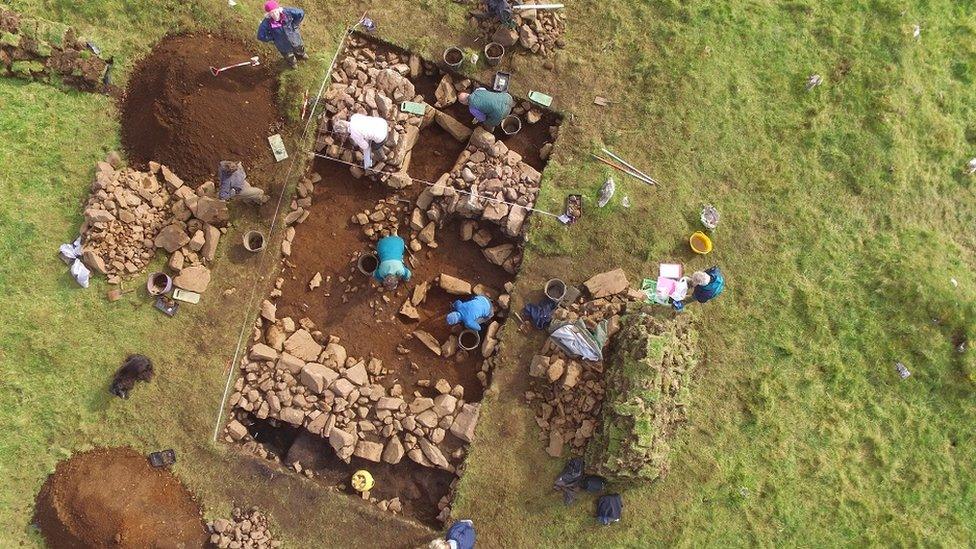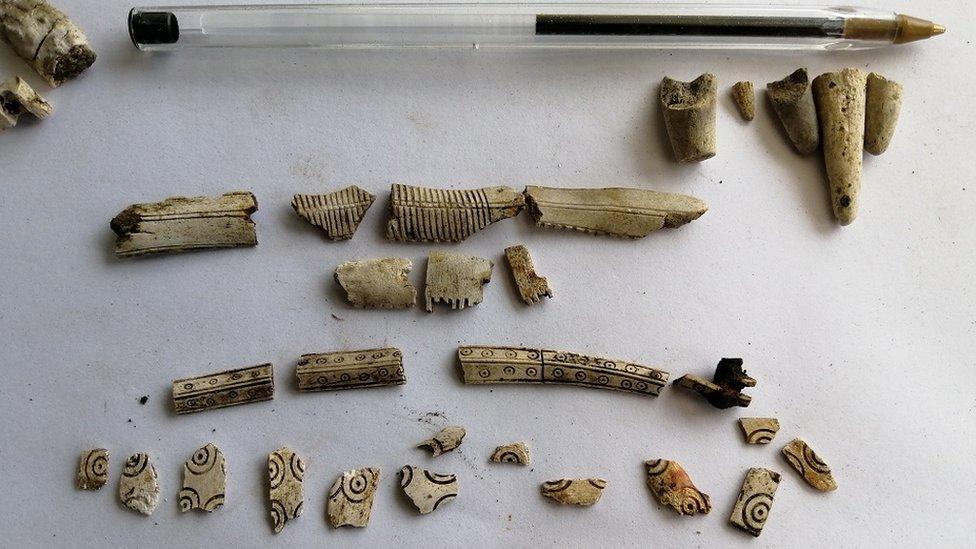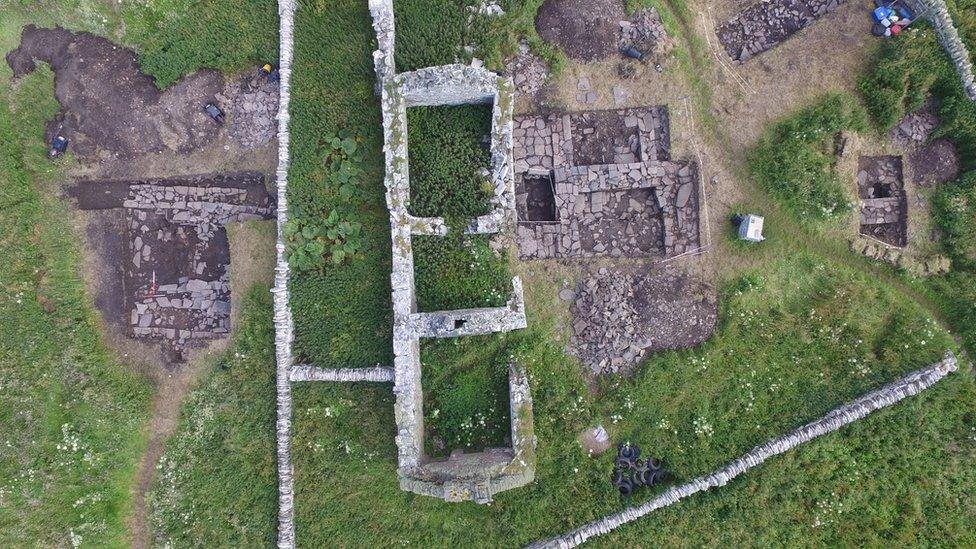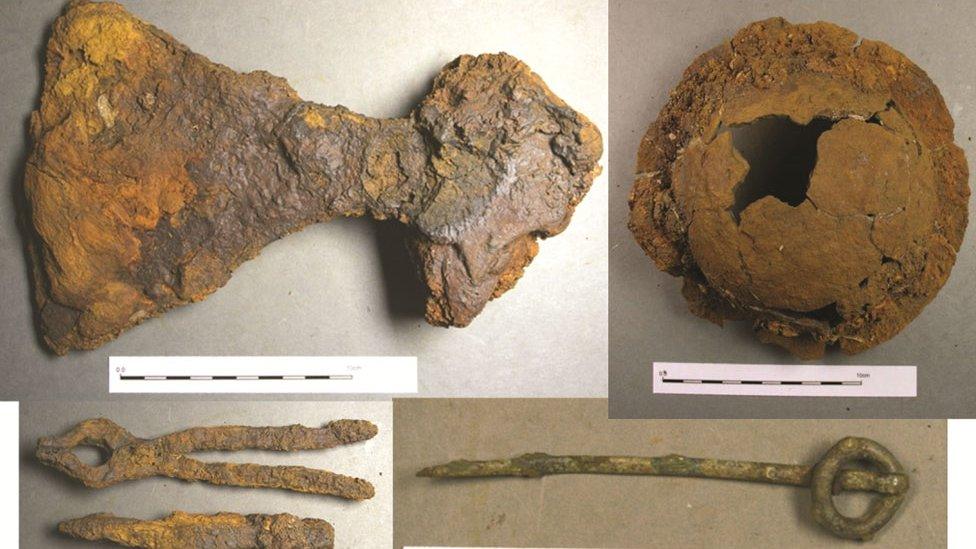Possible Mull Viking boat burials to be investigated
- Published

Archaeologists previously excavated Lephin on Mull in 2018 and 2019
Archaeologists are preparing to investigate two possible Viking boat burial sites on the Isle of Mull.
Two elongated mounds on the Hebridean island are to be evaluated as part of a series of digs later this month.
Boat burials involved high-ranking Vikings being interred with a ship, and in Scotland a site was previously found and excavated in Ardnamurchan.
On Mull, archaeologists will check to see whether the mounds near Lephin are natural features or burial sites.
The investigation will involve archaeologists and volunteers digging small trenches by hand.
The Mull Museum and Argyll Archaeology project, which will be led by archaeologist Dr Clare Ellis, also hopes to unearth Viking and Norse artefacts and structures at Lephin.
Dr Ellis said the Ardnamurchan boat burial was the most southerly known site of its kind in Scotland.
She said: "It would be exciting if this was not a one off and was happening regularly around the coast."
If one, or both, of the mounds were found to be a burial site, more funding would be sought to plan and carry out a full or partial excavation of a mound.

Fragments of decorated comb were previously found at Lephin

Settlement structures were previously found at Lephin
Viking and Norse finds were made in digs at the location in 2018 and 2019.
Previous discoveries have included evidence of an early settlement with a turf and timber structure.
Fragments of a late 10th or 11th Century decorated antler comb and cover, similar to ones found at Norse period sites in Orkney and throughout Scandinavia, were also found.
Archaeologists said during the late 12th and first half of the 13th Century there was a thriving farm at Lephin.
Middens, or rubbish dumps, were found at the site and contained burnt grains, metal objects and fragments of pottery.
Dr Ellis said it would be interesting to discover whether descendants of Vikings arriving on Mull in the 8th and 9th centuries continued to live and farm on the island in the Norse period of around the 10th and 11th centuries.


In 2011, archaeologists revealed the discovery of a rare, intact Viking boat burial in Ardnamurchan in the west Highlands.
Artefacts buried alongside the Viking in his boat suggested he was a high-ranking warrior.
The finds included a sword, spearhead and 213 of the boat's rivets.
Other Viking and Norse discoveries made in Scotland have included a 12th Century shipyard on Skye and a suspected drinking hall in Orkney.
Related topics
- Published22 July 2021
- Published6 August 2019

- Published24 January 2017

- Published5 May 2011
